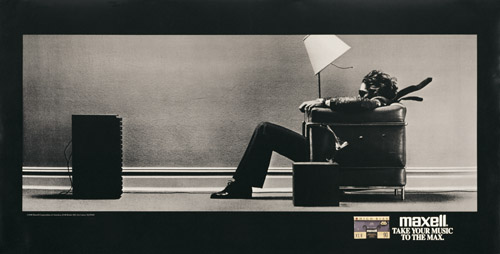The Day The Music Died
Back in 2011 Jon Bon Jovi accused Steve Jobs (in Britain’s Sunday Times) of being “personally responsible for killing the music business.”
Unlike his rock and roll compatriots from Metallica, who infamously went on an anti-Napster crusade in 2000, or underground prog-rock avatar Steven Wilson, who loathes digital files on purely aesthetic principles, Bon Jovi was lamenting the halcyon days of vinyl. (He may not have been aware that LP and turntable sales had experienced a resurgence in recent years.) This notion—that the digitization of music has indelibly impacted the medium for the worse—is neither a new nor particularly original proposition. In successive decades it was initially cassettes, then compact discs that, according to self-appointed experts, were certain to devastate the integrity of organic sounds. Peripherally, industry honchos fretted that the ability to record (and later, burn) content would have a deleterious impact on sales. These concerns proved unfounded, to put it mildly.
“Independent of overall industry sales—of which you could point to the disaggregation of the album into individually available songs as having a bigger direct impact than being digital—more music is consumed today than ever before,” according to Jason Herskowitz, co-founder at Tomahawk. “We’ve now moved into an era of the disaggregation of streams, where artists offer different content across promotional platforms like Official.fm and SoundCloud, video platforms like YouTube, and subscription services like Spotify and Deezer. Tomahawk provides fans a single interface into all of their own unique available music sources—along with programming, curation and translation layers across the top of them all.”
Take My Content, Please!
In reality few did, or should have, shed tears for the ways digital files altered the music scene. In fact, downloadable content liberated artists and helped audiences procure more content for less money. This brave new model defied initial fears and expectations and actually enabled savvy artists to accrue potentially greater profits. Online exposure benefits artists, and if this concept was once controversial, it is now conclusive. True, the mechanisms for “stealing” music remain rampant. On the other hand, artists receive invaluable—and heretofore inconceivable—exposure by presenting samples of their work online or at social networking sites. For every pirated album, there are dozens (or thousands, and possibly millions) of eyes and ears that might stumble upon a band’s work on YouTube or Rhapsody.
“Technology has drastically altered the landscape for musicians in the production and distribution of their music. In the past it required hundreds of thousands of dollars of investment in studio time and the shipping and stocking of plastic discs all around the world,” Herskowitz says. “Now it only requires a computer, an Internet connection and some spare time.”
Technology and innovation have undoubtedly bestowed unique blessings on musicians. Without the marketing incentives inherent in digital content musicians could not create, distribute and control their intellectual property. (This process used to entail considerable investment and kept bands beholden to record labels that did not always have their best interests in mind.)
In sum, we have heard—and likely always will hear—alarmist rhetoric about how some new development signals the death knell for so-called business as usual. Follow the money: anytime new solutions threaten to change the world as we know it, this is invariably a positive development for consumers.
The Democratization of Content
It is not necessary, in the final analysis, to debate whether Steve Jobs killed or saved music. The inescapable fact is that he did as much as any single entity to change how we listen to music. The pay-as-you-go model of iTunes did more to empower—and enrich—musicians as anything the most well-meaning purists could have managed, or imagined. The trajectory from the Wild West chaos of Napster to the more structured system of iTunes took a while to sort itself out, but finally certain mechanisms were set in place. The subsequent popularity of streaming services, like Rhapsody and Pandora, represent another positive advance for consumer, artist and industry. 2012 signals the first year that consumers will spend more money on digital music than CDs and other physical formats (source: Strategy Analytics). The appeal of subscription-based services delivers a diverse quantity of music in an organized and regulated format.
From Napster to MySpace, everything about music – from creation to marketing to distribution – has come almost full circle, albeit in a way that fully embraces the technological advances digitized content enabled. Perhaps the most vivid way to comprehend what is happening in the music space is to consider what has already happened in the print sector.
Not all that long ago blogs were dismissed (often by the very folks now finding themselves caught up in cutbacks at shrinking newspapers), but have developed into a viable – and profitable– alternative to traditional media. The same principle applies to readers of newspapers and magazines: if content can be found online for free, who is going to pay for it? (The reason this content is even available online is because once the balance of power in terms of readership transferred, the mainstream outlets followed the advertising dollars.) Today, writers with popular blogs are making the type of money from advertisers that newspapers and magazines once took for granted. E-readers (and tablets), obviously, represent an entirely new frontier in terms of how we engage with “old school” media. Claiming any one individual is responsible for destroying, or salvaging, the music industry is not unlike suggesting the Internet devastated printed publishing. Certainly, a narrow and short-sighted case could be made, but the reality is that the Internet and all manner of digital content has vastly expanded the options and possibilities.

